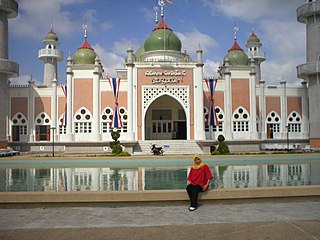
Pattani is one of the southern provinces of Thailand. Neighboring provinces are Narathiwat, Yala, and Songkhla. Its capital is the town of Pattani.
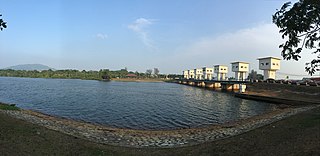
Narathiwat is one of the southern provinces (changwat) of Thailand. Neighboring provinces are Yala and Pattani. To the south it borders the Malaysian state of Kelantan and Perak. The southern railway line ends in this province, which is one of the nation's four provinces that border Malaysia. The province features a range of cultures as well as natural resources, and is relatively fertile. Narathiwat is about 1,140 kilometers south of Bangkok and has an area of 4,475 km2 (1,728 sq mi). Seventy-five percent of the area is jungle and mountains and has a tropical climate.

Yala is the southernmost Province (changwat) of Thailand. Neighboring provinces are Songkhla, Pattani, and Narathiwat. Yala is one of two landlocked provinces in southern Thailand, the other being Phatthalung. Its southern part borders Kedah and Perak of Malaysia.

Khao Sok National Park is in Surat Thani Province, Thailand. Its area is 461,712 rai ~ 739 square kilometres (285 sq mi), and it includes the 165 km2 (64 sq mi) Cheow Lan Lake contained by the Ratchaprapha Dam. The park is the largest area of virgin forest in southern Thailand and is a remnant of rain forest which is older and more diverse than the Amazon rain forest.

Khao Yai National Park is a national park in Thailand. Established in 1962 as Thailand's first national park, it is the third largest national park in Thailand.
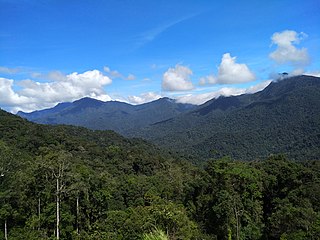
The Titiwangsa Mountains, also known as Banjaran Besar by locals, is the chain of mountains that forms the backbone of the Malay Peninsula. The northern section of the range is in southern Thailand, where it is known as the Sankalakhiri Range.

Su-ngai Kolok is a border town and subdistrict on the Malaysia-Thailand Border in Su-ngai Kolok District, Narathiwat Province, Thailand. It is one of the largest and most prosperous districts in Narathiwat Province. It is also one of the major economic centers in the southern part of Thailand. It is capital of the Su-ngai Kolok District. As of 2005, the town had a population of 38,612. Across the border is Rantau Panjang, Kelantan, Malaysia.

Ra-ngae is a district (amphoe) in Narathiwat province, southern Thailand.

Waeng is the southernmost district (amphoe) of Narathiwat province, southern Thailand.

Tak Bai is a district (amphoe) in the southeastern part of Narathiwat province, southern Thailand.

Sukhirin is a district (amphoe) in the southern part of Narathiwat province, southern Thailand.
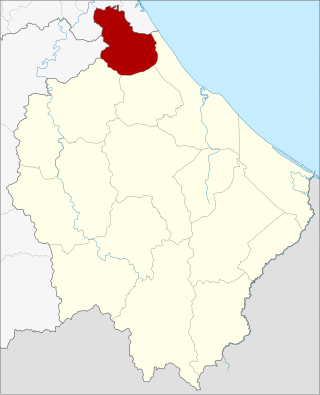
Bacho is the northernmost district (amphoe) of Narathiwat province, southern Thailand.
Khao Luang is the tallest mountain in southern Thailand. It is in Nakhon Si Thammarat Province.

Aglaia lawii is a species of tree in the family Meliaceae. As well as the autonym species, there are two subspecies accepted.
Chat Warin Waterfall is a waterfall in Tambon To Teng, near Narathiwat, Thailand. The entrance is a good asphalt road in Budo–Su-ngai Padi National Park. This is a medium-sized waterfall that has water year round and is shady from the many trees in the area.
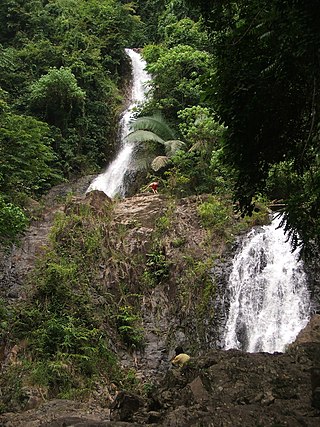
Khao Phanom Bencha National Park is a national park in Krabi Province, Thailand. The park is named for Khao Phanom Bencha mountain and protects an area of virgin rainforest and rare wildlife.

Khao Lak–Lam Ru National Park is a national park in Phang Nga Province, Thailand. The park is named for two of its mountain peaks, Khao Lak and Lam Ru. It also encompasses beaches and forests.
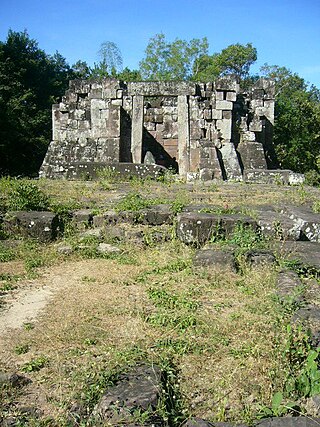
Phu Phan National Park is a national park in Sakon Nakhon and Kalasin provinces, Thailand. This isolated park covers a wide jungle area in the Phu Phan Mountains of Isan.
Khun Phawo National Park is a national park in the Mae Ramat District, Tak Province, Thailand.
Princess Sirindhorn Wildlife Sanctuary, or popularly known as Pa Phru To Daeng (ป่าพรุโต๊ะแดง), or just called Phru To Daeng (พรุโต๊ะแดง) is a largest and most fertile peat swamp forest in Thailand covering an area of 125,625 rais, about 4.9654 km2 (49,654 a) in Mueang Narathiwat, Tak Bai, Su-ngai Kolok, and Su-ngai Padi districts of Narathiwat province in southern Thailand. It is about 6 km from Su-ngai Kolok railway station.
















